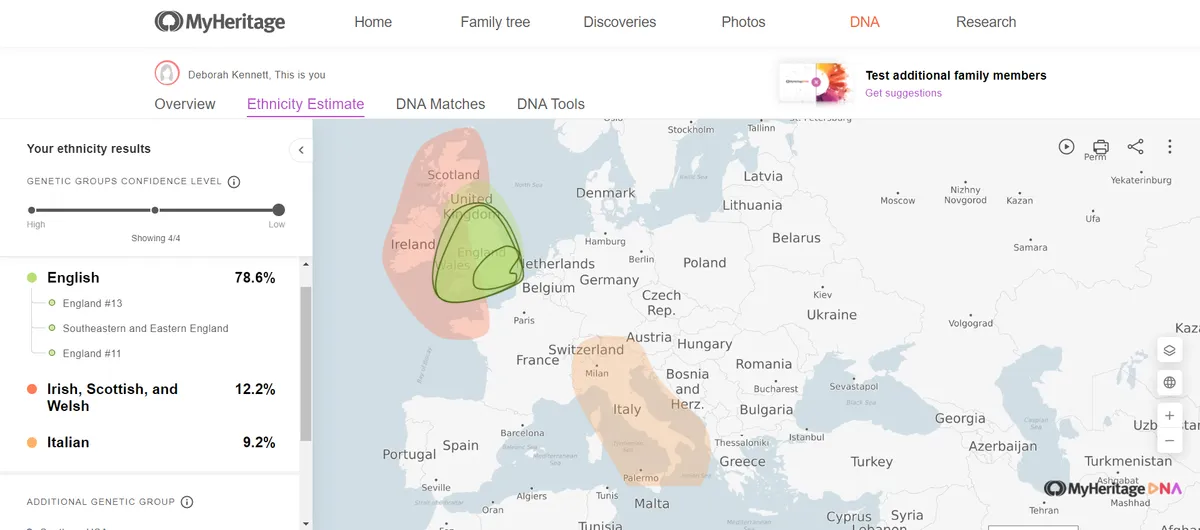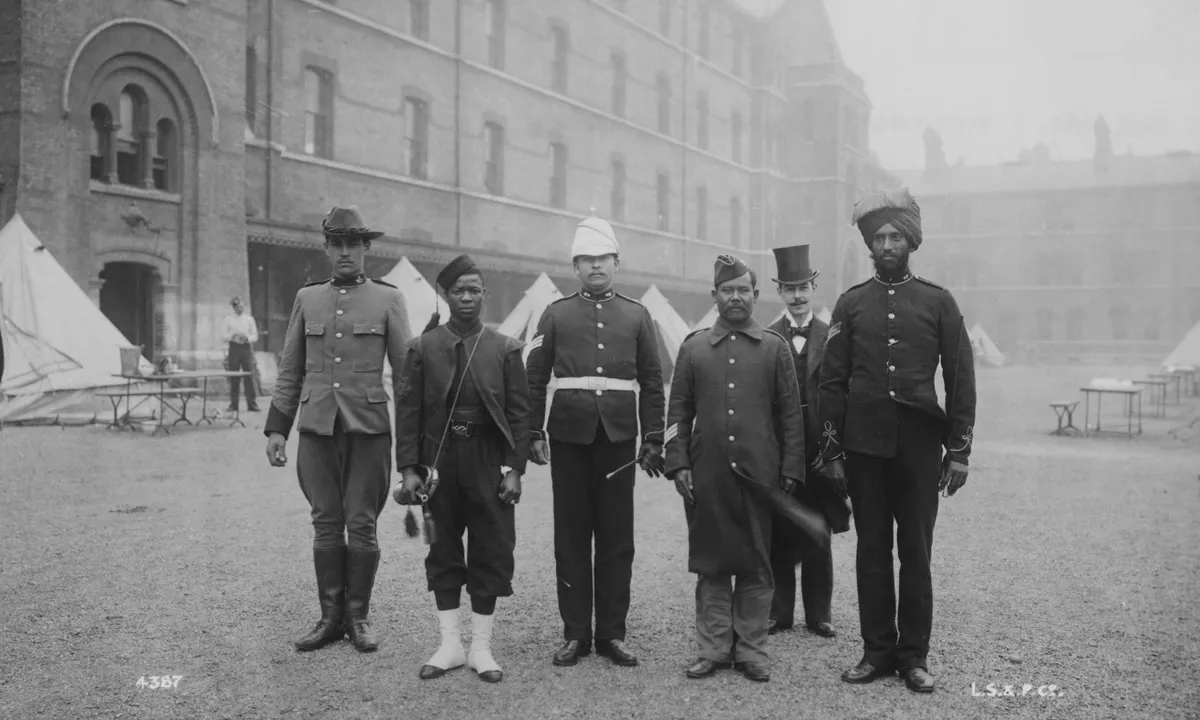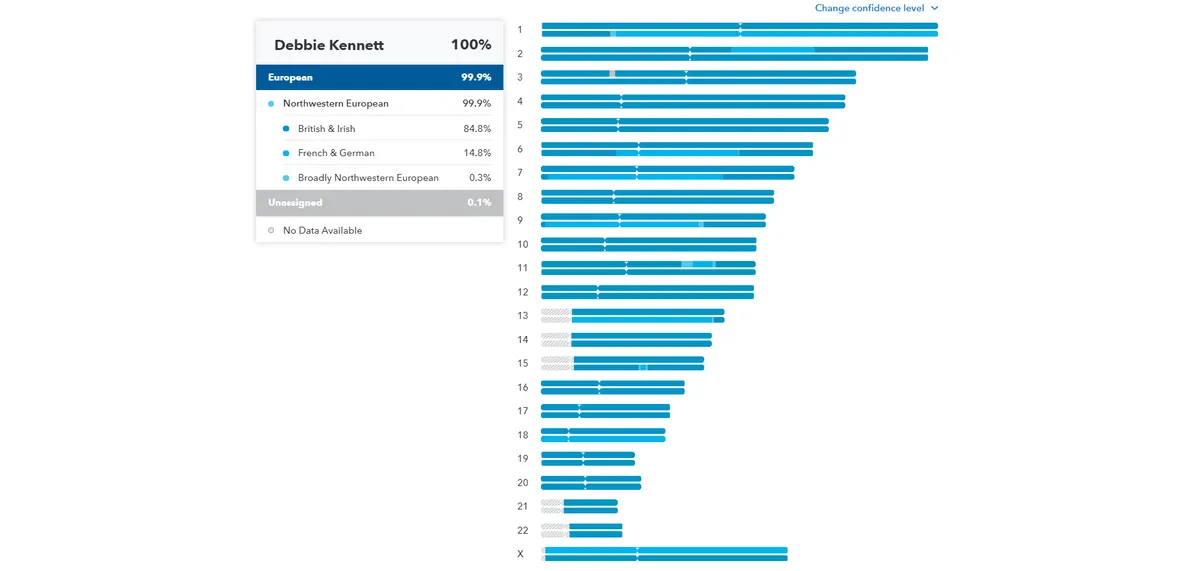DNA testing has now become an integral part of family history research.
Don't miss our guide to help you choose the right DNA test for you
For genealogy purposes it’s the list of distant relatives that is the most important part of the test, but all of the companies also provide a DNA ethnicity report where they try to assign our DNA to different countries or regions of the world. DNA ethnicity can sometimes help to inform your family history research, and will occasionally lead to surprise discoveries.
DNA ethnicity: Your questions answered
What does ethnicity mean?
Ethnicity is a reflection of shared ancestry based on social and cultural practices. Ethnic groups may be linked by a religious affiliation, a shared linguistic heritage or a common geographical origin.
Ethnicity cannot be detected by DNA, but there is sometimes an overlap with a person’s genetic ancestry. For example, people who share the same heritage will often live in the same places and marry people from similar backgrounds.
Ethnicity was historically used as a synonym for race, but the meanings have diverged over time. Ethnicity differs from race in that individuals can choose how they wish to self-identify, and decide whether or not to express the cultural practices associated with their ethnicity.
In contrast, artificial categories of race are imposed upon individuals, and are often based on perceived physical characteristics. Racial categories such as black and white can represent a multitude of ethnicities.
‘Biogeographical ancestry’ is the scientific term used to describe the assignment of genetic ancestry to specific continents, countries or regions. However, this phrase does not easily roll off the tongue, so the companies have tried to use simpler names.
23andMe provides its customers with an Ancestry Composition report while Living DNA provides “recent ancestry results”. FamilyTreeDNA’s report is known as myOrigins. AncestryDNA and MyHeritage describe their reports as “Ethnicity Estimates”. The term is nicely alliterative, but scientifically incorrect.
Remember that whatever your DNA results tell you about your biogeographical ancestry, it makes no difference to how you self-identify and define your own ethnicity.

How can DNA tests determine ethnicity?
DNA testing companies determine DNA ethnicity using DNA samples from present-day individuals, which form a panel of reference populations.
The DNA ethnicity samples are taken from projects such as the 1000 Genomes Project, the Human Genome Diversity Project, the Simons Genome Diversity Project, the Asian Diversity Project and the People of the British Isles Project. Samples are generally collected from people with deep roots in a particular location. For some DNA ethnicity projects the requirement is that the individual should have four grandparents from the same country, region or county.
The next stage is to analyse the reference samples and to put them into a predefined number of genetic clusters. Outliers are removed. The clusters are then given names based on the present-day countries or regions they represent. The clusters will inevitably have some overlap because our DNA is not confined to modern political boundaries, so a French cluster might also include people from other countries in North-West Europe.
Each individual customer’s DNA is then compared with the reference populations, and you are given percentages based on your closest matching populations. You can of course only be matched to populations represented in the company database. For example, if you are from Denmark and the company has no Danish samples, you will be matched to the next closest population.
The companies sell most of their tests in Europe, North America and Australasia, and it is these populations that are best represented in the DNA ethnicity databases. It is now possible to get quite granular results for people of European ancestry, but the results for people of African or Asian heritage are much less detailed and can often be disappointing. Academic research has also focused on Europe, although this is slowly starting to change.

The testing companies started out by comparing individual markers that are mainly found in specific populations. These are known as ‘ancestry informative markers’. Living DNA and AncestryDNA have adopted a different approach and use ‘haplotypes’ – markers that are linked together in small segments. This approach is more representative of recent ancestry within the past 500 years or so. Each company uses different algorithms and compares your results to different reference populations, so results vary from company to company. Ancestry is the only company whose test shows what DNA you've inherited from each parent. The companies are also constantly striving to improve their results, so your results with any one company will change over time.
How accurate are DNA ethnicity tests?

In general, the DNA ethnicity percentages are most accurate at the continental level. Within Europe the companies can broadly separate North-Western European, Southern European and Eastern European ancestry, even if the countries assigned within these regions are not correct.
The ancestry proportions with the largest percentages tend to be the most reliable. Small percentages under 1 per cent are often nothing more than noise, and percentages under about 30 per cent will not necessarily provide a true reflection of your recent ancestry.
If you find that a DNA ethnicity test gives you 10 per cent Norwegian or 9 per cent Italian and you have no documented ancestry from these locations, you shouldn’t start looking for Norwegian or Italian ancestors in your family tree. You’ll probably find that these percentages disappear the next time the company updates its product. Results are more likely to be reliable if the admixture is found consistently in the results from a number of different companies. The most reliable indicator of your ancestry is not your ethnicity estimate but the names and family trees of your matches.
